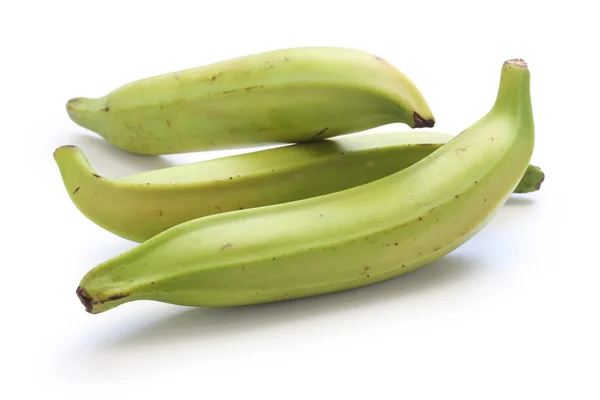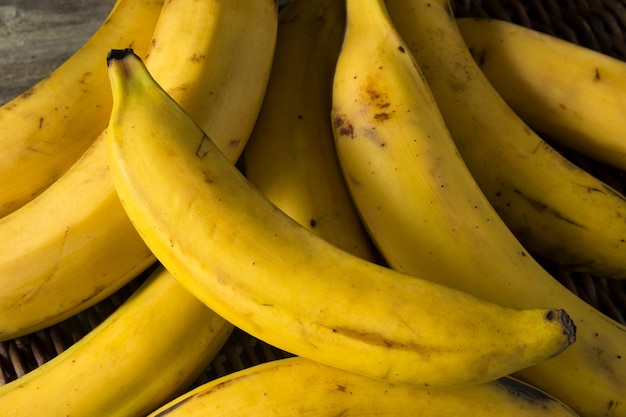A look at “Nutritional Difference Between Unripe and Ripe Plantain” As a rich source of essential vitamins and minerals, plantains are a common dietary staple in many parts of the world. In this article, we’ll explore the nutritional difference between unripe and ripe plantain, as well as some possible benefits and facts you may not have known.
Unripe Plantain Nutrition

Unripe plantain is typically green and hard to the touch, with a starchy, slightly bitter taste. While it may not be the most appetizing on its own, unripe plantain is actually incredibly nutrient-dense, containing a variety of essential vitamins and minerals that can benefit your health in numerous ways.
For example, unripe plantain is an excellent source of dietary fiber, which can help regulate digestion and prevent constipation. It also contains high levels of resistant starch, which can help promote healthy gut bacteria and reduce the risk of colon cancer.
In addition, unripe plantain is rich in potassium, a mineral that is essential for maintaining proper fluid balance, regulating blood pressure, and supporting healthy kidney function. It also contains significant amounts of vitamins A and C, as well as B vitamins like thiamin, riboflavin, and niacin.
Ripe Plantain Nutrition

In contrast to unripe plantain, ripe plantain is much softer and sweeter, with a yellow or black skin that is easy to peel. While it may not be as nutrient-dense as its unripe counterpart, ripe plantain still contains a variety of important vitamins and minerals that can contribute to a healthy diet.
For instance, ripe plantain is a good source of vitamin C, which is essential for immune system function and collagen production. It also contains moderate amounts of potassium, as well as dietary fiber, which can help promote satiety and prevent overeating.
Possible Benefits of Plantains
In addition to their nutritional content, plantains may also offer a variety of potential health benefits. Some studies have suggested that eating plantains may help regulate blood sugar levels, lower cholesterol, and even reduce the risk of certain types of cancer.
Furthermore, plantains contain antioxidants like vitamin C and beta-carotene, which can help protect your cells from damage caused by harmful free radicals. They may also have anti-inflammatory properties, which could make them a useful dietary addition for individuals with conditions like arthritis or inflammatory bowel disease.
Ripe vs Unripe Plantain Calories: Which One is Healthier?
When it comes to plantains, many people are unsure of whether to opt for ripe or unripe plantains. This is not surprising given that both types have unique flavors and textures. However, for people who are conscious of their calorie intake and want to make healthier dietary choices, it is important to know which of the two is healthier. In this article, we will be discussing ripe vs unripe plantain calories and which one is healthier.
Ripe Plantain Calories
Ripe plantains are sweeter and softer than unripe plantains. This is because they contain more sugar, which is why they are usually used in sweet dishes. However, the increased sugar content means that ripe plantains also contain more calories than unripe plantains. A medium-sized ripe plantain contains around 218 calories, which is significantly higher than the 122 calories in a medium-sized unripe plantain.
Despite having more calories, ripe plantains are still a great source of nutrients. They are rich in vitamins A, C, and B6, as well as potassium and fiber. However, if you are watching your calorie intake, it is important to consume ripe plantains in moderation.
Unripe Plantain Calories
Unripe plantains, also known as green plantains, are firmer and less sweet than ripe plantains. They are usually used in savory dishes and are a staple in many African, Caribbean, and Latin American cuisines. Unripe plantains have a lower sugar content, which means they have fewer calories than ripe plantains. A medium-sized unripe plantain contains only 122 calories.
Although unripe plantains have fewer calories than ripe plantains, they are still a great source of nutrients. They are rich in vitamins A, C, and B6, as well as potassium and fiber. Additionally, unripe plantains have a lower glycemic index than ripe plantains, which means they are less likely to cause a spike in blood sugar levels.
Which One is Healthier?
When it comes to choosing between ripe and unripe plantains, it really depends on your dietary goals. If you are trying to lose weight or watching your calorie intake, unripe plantains are the better option. They contain fewer calories and have a lower glycemic index, which means they are less likely to cause a spike in blood sugar levels. On the other hand, if you are looking for a sweeter flavor or planning to make a sweet dish, ripe plantains are the way to go.
Glycemic Index of Ripe and Unripe Plantains
The glycemic index (GI) is a measure of how quickly a food raises blood sugar levels. Ripe plantains have a higher glycemic index than unripe plantains. This means that they can cause a rapid spike in blood sugar levels, which can be problematic for people with diabetes or those trying to manage their blood sugar levels. Unripe plantains, on the other hand, have a lower glycemic index, which means that they are digested more slowly and can help to maintain stable blood sugar levels.
Cooking Methods for Plantains
Plantains can be cooked in a variety of ways, including boiling, frying, baking, and grilling. The cooking method can affect the nutritional content of plantains, so it’s important to choose a healthy cooking method. Boiling or steaming plantains is a healthy option that can help to preserve their nutritional content. Frying plantains, on the other hand, can increase their calorie content and reduce their nutritional value.
Plantain Recipes
Plantains can be used in a variety of recipes, from sweet to savory. Some popular plantain recipes include:
- Fried plantains: ripe plantains can be sliced and fried in oil until crispy.
- Plantain chips: thinly sliced plantains can be baked or fried to make a healthier alternative to potato chips.
- Plantain fritters: mashed ripe plantains can be mixed with flour, eggs, and other ingredients to make fritters that can be fried or baked.
- Plantain porridge: ripe plantains can be mashed and mixed with milk and other ingredients to make a creamy and delicious porridge.
- Stewed plantains: unripe plantains can be sliced and simmered in a flavorful broth until tender.
Risks Associated with Eating Plantains
While plantains are generally considered a healthy food, there are some risks associated with eating them. For example:
- Allergic reactions: some people may be allergic to plantains or other members of the banana family.
- High calorie content: ripe plantains are higher in calories than unripe plantains, which can be problematic for people trying to lose weight or maintain a healthy weight.
- High sugar content: ripe plantains are higher in sugar content than unripe plantains, which can be problematic for people with diabetes or those watching their blood sugar levels.
Conclusion
In conclusion, both unripe and ripe plantains offer a range of important vitamins and minerals that can contribute to a healthy, balanced diet. While unripe plantain is more nutrient-dense, ripe plantain still contains important nutrients like potassium and vitamin C. And with potential benefits like blood sugar regulation and anti-inflammatory effects, plantains are a great addition to any diet.
FAQs
A1. Unripe plantains are a good source of complex carbohydrates, fiber, and vitamins such as vitamin C, vitamin B6, and potassium. Ripe plantains, on the other hand, are higher in simple sugars and have less resistant starch than unripe plantains. Ripe plantains are also a good source of vitamins A and C, potassium, and fiber.
A2. Yes, unripe plantains can help with weight loss due to their high fiber content. Fiber helps you feel full for longer, which reduces your calorie intake and prevents overeating. Additionally, the resistant starch found in unripe plantains can help boost metabolism and burn more calories.
A3. Ripe plantains contain several essential vitamins and minerals that are beneficial for overall health. They are a good source of vitamin A, which is important for maintaining healthy skin, vision, and immune function. They also contain vitamin C, which helps boost immunity and promotes wound healing. Potassium found in ripe plantains helps regulate blood pressure, while fiber promotes digestive health.
A4. Ripe plantains are generally considered healthy but should be consumed in moderation due to their high sugar content. Excessive consumption of ripe plantains may lead to a spike in blood sugar levels and contribute to weight gain.
A5. Plantains can be prepared in many ways and make a delicious addition to any meal. You can slice them and fry them to make plantain chips or bake them for a healthier option. Plantains can also be mashed and used as a substitute for potatoes or added to soups and stews for added texture and flavor.
See Also | 11 Side Effects of Garden Egg Leaves On Humans: Uses And Benefits
Copyright © 2022 | 247newsaroundtheworld.com All rights reserved. The information contained in 247newsaroundtheworld.com may not be published, broadcast, rewritten, or redistributed without the prior written authority of 247newsaroundtheworld.com.






